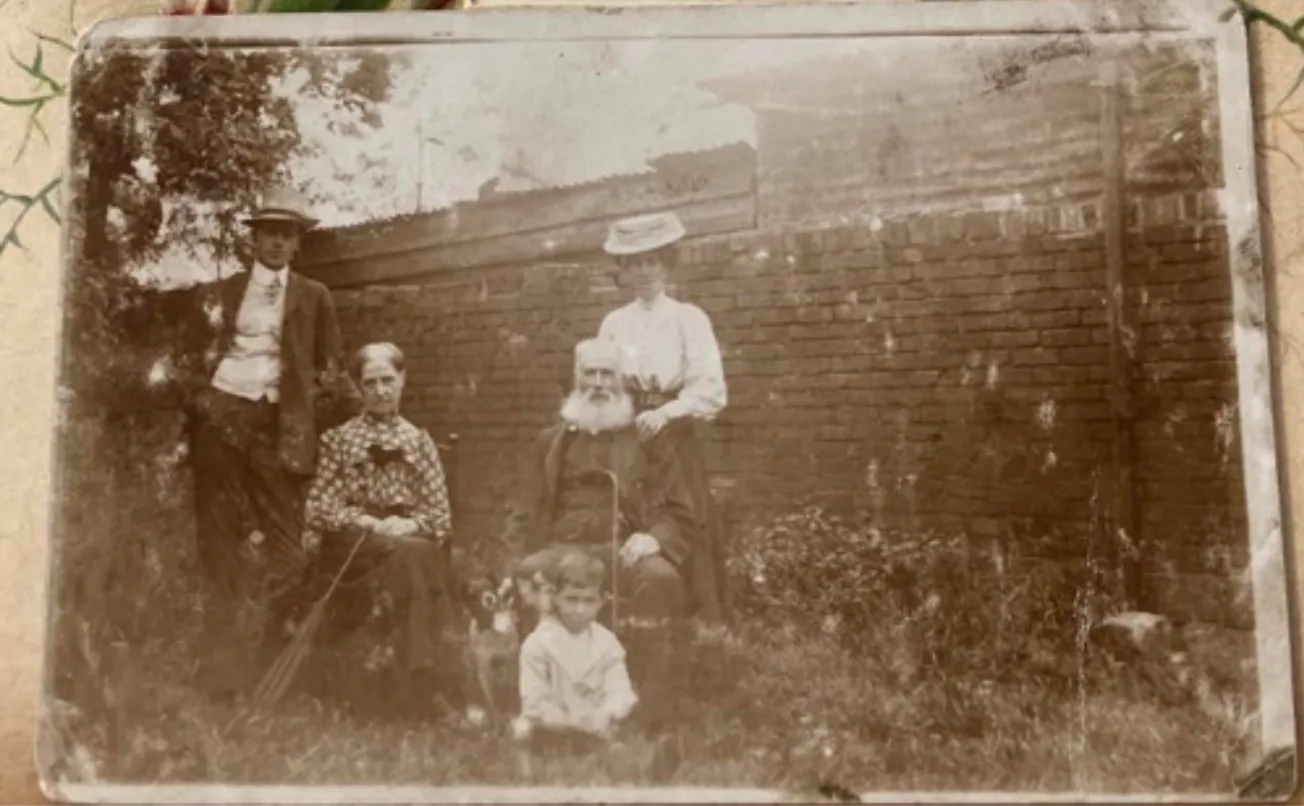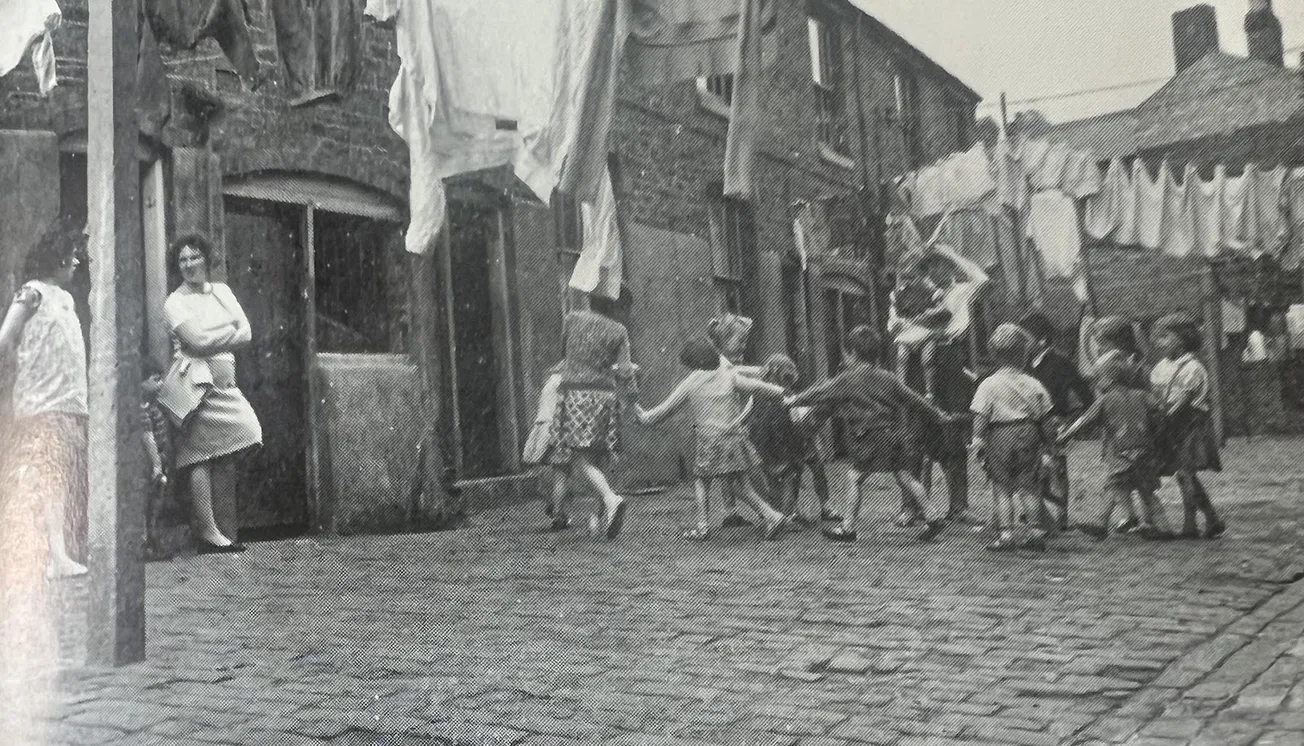A quick reminder that right now, we're running a special 50% Spring discount. If you're yet to sign up to a full Dispatch membership — that's access to all our editions, events and exclusives in your inbox and online — now you can, for just £1 a week. Back local journalism now, for less than the price of a morning coffee.
Where I’m from: As some of you might have gauged, horrifyingly — I’m not from Birmingham. However, my life is full of distant Birmingham and West Midlands connections. I was born and grew up in Brighton, known to many locals as B’town. B’town sat alongside Birmignham’s own, Digbeth-based, B-Town scene in my teenage imagination. Around 2012, both cities were dominated by the kind of bland, but enjoyable, indie music produced by the likes of Swim Deep, Peace and JAWS. I probably resent these Birmingham bands, because, back in Brighton they were considered a barometer of cool that I could never measure up to (namely, by former girlfriends and love interests). I checked out the song ‘California Daze’ for the first time in thirteen years, and its still evocative of sneaking vodka and smoking cheap cigarettes on Brighton beach. A full decade on, and my younger brother sometimes drinks with members of Swim Deep in West London — he says they’re all nice lads…
My other Birmingham and West Midlands intersection is family. My dad’s side is Scottish (and consequently full of lore about internecine fraternal rivalries and kilted men rowing Bonnie Prince Charlie to waiting French ships). However, my mother’s English side has quiet West Midlands roots. My maternal grandparents were East Midlanders (Northampton) who fled to London to be bohemians during the staid 1950s, and respectable Claphamites during the swinging 1960s (I, for one, think they might have got this the wrong way around).
But beyond them is a sea of West Midlanders. The names of towns like Tamworth and Lichfield come up all the time. Last summer I was given a bunch of deeds and wills from the 18th century, detailing a very stern Methodist wool merchant with my mum’s last name bequeathing eight Tamworth cottages to his widow. As a long term renter, I’d quite like to know where these cottages got to? I reckon they must have lost them, because all my 19th century West Midlands ancestors look incredibly miffed. Anyway, long-story-short, my moving to Birmingham is a homecoming of sorts…
What I’m reading: I’m always reading about five books, half fiction and half non-fiction, simultaneously (and instantly forget almost everything I’ve read the next day). However, as a fairly time-poor reporter and journalist, who has already spent eight hours reading for work, I tend to structure my book perusing quite tightly. This is a long way of saying I’m boring and often read what’s assigned to me, i.e I’m part of a few reading groups.
One group, run by a friend-of-a-friend from Berlin, is dedicated to finishing all three volumes, and 1000 plus pages, of Peter Weiss’s The Aesthetics of Resistance (1975-1981). Weiss was a German refugee from Nazi Germany who spent most of his working life in Sweden. Large swathes of the book feature the protagonist (a rough stand-in for Weiss) living and working in unfamiliar contexts and cities: from Barcelona to Stockholm. I like being in unknown surroundings, and Birmingham is not my first new city: I’ve also lived in Santiago de Chile, Cambridge, London, St Andrews, Charlottesville, Virginia and spent six months on the seat (and sometimes the floor) of various Amtrak trains barreling through the deserts of the American south west. I still like the Amtrak seat best. Cambridge comes a close second.
Talking of travel, last year I won the Rupert Cornwell Prize for foreign correspondency. Rupert Cornwell was the half-brother of spy fiction author John le Carré, and a foreign correspondent for the Independent covering the USSR and USA. I’m taking a month’s break from The Dispatch over the summer to go and report on the politics of land management and wildfires in Mexico for the prize. Consequently, I’m trying to brush up on my Latin American history with The Penguin History of Latin America by Edwin Williamson. Any recommendations for Mexican history books, or even fun films, from Dispatch readers would be most welcome.
A story I’m working on: I’m currently working on a story about the Midlands Industrial Council (MIC), a somewhat shadowy organisation, originating in the 1940s during the government of Clement Attlee. The MIC was formed by wealthy Midlands based industrialists in reaction to Attlee’s social democratic reforms, advocating instead for a small state, laissez-faire economics and moral probity (i.e. social conservatism). The MIC continues to this day. Prominent members include Solihull’s (now Portugal-based) Lord Edmiston (car imports), and Staffordshire-based Lord Bamford (JCB diggers). According to one journalist it is responsible for funding £1 out of every £5 donated to the Conservative Party — although it seems Lord Bamford has now defected to Reform UK. During the Tony Blair years, the MIC used to operate a political consultancy from a huge Gothic mansion situated on a hill above Birmingham. What are they getting up to now?
And a story I want to return to: I started my career at the Dispatch with a feature piece exploring the Khalistan movement in the West Midlands. In 2023, the Khalistan activist Avtar Singh Khanda died in Birmingham City Hospital after an incredibly rapid diagnosis of acute myeloid leukemia. A year later, Justin Trudeau would expel Canada’s Indian diplomats over suspicions that Sikhs had been killed by Indian agents on Canadian soil. This sparked a conversation about ‘transnational repression’ of Khalistan activism. Many now speculate about Singh Khanda’s death in Birmingham — are we looking at foul play? We’ve been trying to make progress on this story for a while. It’s a hard case to crack.
What I’m watching: The Sopranos, for many reasons. One, I think Italian-American men of that generation dressed well and lived well — I often long to smoke and eat cured ham while playing blackjack in a club room while wearing a perfectly tailored suit. Two, a close friend of mine is a New Jersey based, partly Italian-American guy. His world of small town ethnic America — which to me is the universe of authors like Philip Roth, Saul Bellow and John Updike — fascinates me. Three, the interpersonal, and often tight-knit, nature of New Jersey politics in The Sopranos reminds me of Birmingham. Everyone in The Sopranos seems to know each other, or know someone who knows someone. Despite being the second largest city in the UK, Birmingham can feel like a village once you start putting together the connections. There’s a shared sense of being distinct from larger neighbours too. Just as Newark, NJ is in the shadow of New York, Birmingham is in the shadow of London. Also Newark was the 19th century jewellery making capital of America. Sound familiar?
That reminds me: I keep playing a parlour game with friends, whereby I make the case for an urban equivalency between Birmingham and a US city. Brighton is obviously San Francisco. The comparison between Birmingham and Newark only came to me today. However, my top two picks for Brum counterparts are Chicago and Los Angeles. Chicago is self-evident: it’s twinned with Birmingham, it's arguably landlocked, the place is often considered America’s ‘second city’ to the extent that it has a world famous comedy club named that, Chicago is the capital of the Midwest while Birmingham is the capital of the West Midlands. Finally, both cities pioneered industrial-influenced music, from Heavy Metal to House.
L.A is a curveball, but I think it works as a comparison too. L.A is a city dominated by the car and huge arterial roads. Its city centre is surprisingly small, it’s super diverse, it has poor public transport, and chronic problems with litter and homelessness. Ring a bell? I’m obsessed with City of Quartz (1990) an encyclopaedic travelogue into the dark heart of Los Angeles by the late Mike Davis — it’s what got me into metro reporting. I once followed Davis’s footsteps across L.A, by breaking into the disused subways below the city (where the Red Hot Chili Pepper's 'By The Way' was filmed). I’m still looking for Birmingham’s Davis…
Something I could use your help with: I feel our coverage of North Birmingham (Castle Bromwich, Aston, Tyburn, Erdington, Perry Barr and Handsworth, etc) could be more extensive. Got ideas for stories in these neighbourhoods, rumours of odd goings on? Let me know at sam@birminghamdispatch.co.uk.








Comments